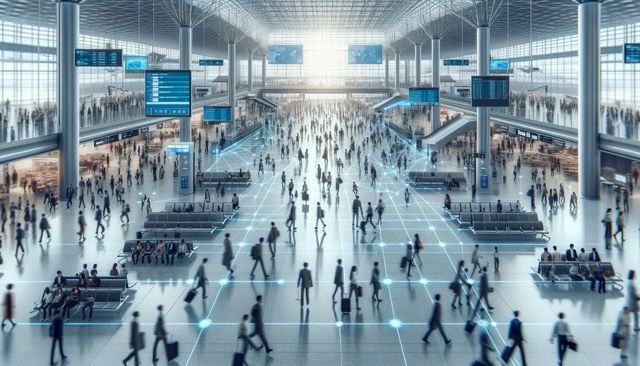This blog post was originally published at Outsight’s website. It is reprinted here with the permission of Outsight.
Airports, as critical transportation hubs, play a dual role in ensuring passenger safety and maintaining a smooth flow of travelers.
Balancing these two aspects is a challenging endeavor, especially in the face of evolving security threats and diverse passenger needs.
The integration of emerging technologies, particularly in the field of people count technologies and crowd management, is revolutionizing this balance.
Historically, airports have relied on traditional automatic passenger counting systems, such as cameras and data from electronic boarding passes.
These methods, especially camera-based systems, while foundational, are indicative of past approaches to managing airport operations and pose serious risk for privacy.
Today, however, the aviation industry is embracing a significant shift with the advent of LiDAR technology.
This cutting-edge advancement is redefining airport security and passenger flow management, propelling airports into a future where security is seamlessly integrated with efficient crowd management and passenger experience, while maintaining the highest possible level of respect for privacy.
Since the events of September 11, 2001, airport security has undergone significant transformations to adapt to complex threats. The challenge for airports is to conduct thorough security checks without causing passenger delays.
Essential processes like body scans and baggage checks, while critical for safety, can lead to long queues and travel disruptions.
One effective solution to this challenge is the implementation of solutions to precisely measure and optimize people flow in airports.
Among these, LiDAR (Light Detection and Ranging) technology is emerging as a powerful tool, offering unique capabilities that significantly enhance both security and passenger experience.
Its key advantages, when used with the right processing software, include:
- Accurate 3D Perception: LiDAR’s precise 3D representations of airport spaces allow for effective crowd management and monitoring of passenger flow and density.
- Privacy Preservation: LiDAR does not capture personal details or facial features, ensuring passenger privacy in line with people count technologies.
- Efficiency in Diverse Conditions: LiDAR functions effectively under various lighting conditions, making it reliable for comprehensive crowd analysis indoors but also curb-side monitoring outdoors.
- Real-time Data Processing: It enables quick Spatial Data processing, offering immediate insights to optimize passenger flow and resource allocation.
- Advanced Analytics: Integration with AI algorithms allows for predictive analytics, assisting airports in anticipating and managing passenger volumes more effectively.
Efficient resource allocation, enhanced training in customer service and cultural awareness for security personnel, and clear communication about security procedures are also crucial for efficient airport operations. For example, the integration of pre-screening programs like TSA PreCheck and Global Entry eases the burden on standard security lines, contributing to efficient people flow.
In conclusion, while ensuring airport security is a challenging task, through strategic planning, technological advancements in people count technologies, and collaborative efforts, airports can significantly enhance security and passenger flow.
The shift from traditional camera-based systems to advanced solutions like LiDAR marks a new era in airport operations, contributing to a safer, more efficient, and streamlined travel experience.
To dive deeper, don’t miss our latest Comparative Guide of People Counting Technologies or request a live demo with a Product Specialist.
Anne-Sophie Dubois
Outsight


